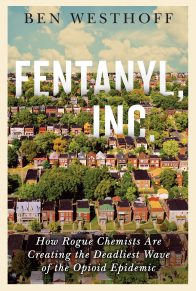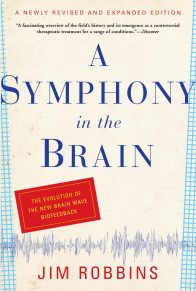In the middle of the night, on May 11, 1993, in the rural Northwest, an eighty-four-year-old man was bludgeoned to death. Three teenagers, high on drugs, had been on a joyride, which by morning included stealing a car, robbing a convenience store, and murder. The youths first knocked on the old man’s door and then broke inside to use the bathroom. Jeffrey later confessed to striking the victim on the head with a flashlight that the man had given them to find their way in the dark. The man was then kicked by the youths as he lay on the floor.
He was found unconscious the next afternoon by a neighbor, lying near the front door of the farmhouse where he bad lived all of his life and where be had seen the raising of his children, grandchildren, and great-grandchildren. He died several months after the attack without ever regaining consciousness.
The youths were identified by several witnesses as Jeffrey, age sixteen; Roger, age seventeen; and Roger’s girlfriend Crystal, age fourteen. Both Jeffrey and Roger had juvenile records. Crystal did not. Crystal was granted immunity and was not prosecuted. Roger was convicted of robbery and sentenced to twenty years. After the victim died, Roger was charged with murder and is now awaiting trial on that charge. Jeffrey pleaded guilty to the robbery and was sentenced to life imprisonment. After the victim’s death, Jeffrey was charged with murder, tried by a jury, found guilty, and sentenced to death. His case is currently being appealed.
He looks like the kid next door. Unassuming, he greets you through the prison visitors’ window with a shy but ready smile. He is nervous, speaks thoughtfully, and clearly appreciates your attention. His body and his mind move quickly. Anxious for approval, he pours out complete explanations of what he anticipates you came to ask, far more than you would comfortably request. You are a stranger to this boy, but you recognize your own kids’ mannerisms, language, interests. He is just days past his eighteenth birthday. He likes to sing and write poetry, which he shares somewhat hesitantly, glancing up often to gauge your reaction. His light brown hair is clean and well kept. His eyes are hazel and clear. Insights unusual for one so young permeate his stories. He chooses to stand apart from his present peer group, hanging out mostly with his cellmate, with whom he shares an interest in self-education and social reform, particularly of the criminal justice system.
Three years ago Jeffrey seemed like just another kid living in the backwash of an unremarkable rural community. A casual observer might have easily overlooked the predictably explosive mixture of life circumstances that heralded disaster for Jeffrey—to say nothing of his victim. Jeffrey’s story is one told hundreds of times daily in courtrooms across our nation. It is a story told by events, psychiatric reports, interviews with victims, witnesses, friends, and family. The quest for explanations in the aftermath of violence often delves into adolescence, into grade school and childhood. But the beginning of stories like Jeffrey’s goes untold. One chapter is nearly always missing—the first chapter, encompassing gestation, birth, and infancy. And because it goes unseen and unacknowledged, it repeats itself over and over at a rate now growing in geometric proportions.
We overlook this period in our search for the causes of violence because we believe that it is irrelevant, not only to this particular crime, but to later experience generally. The popular belief in the United States is that the baby, let alone the fetus, is exempt from thought and the capacity to record enduring experiences. Nothing could be further from the truth. This overlooked chapter of early growth sees the building of the capacities for focused thinking and for empathy—or the lack of these. From the time of late gestation and birth, we begin to develop a template of expectations about ourselves and other people, anticipating responsiveness or indifference, success or failure. This is when the foundation of who we become and how we relate to others and to the world around us is built.
So Jeffrey’s story and others like his become ghost stories. Accompanying this convicted murderer to death row is the ghost of the baby he once was and the echoes of the forces that transformed that baby. As is true of most ghosts, these aspects remain invisible, at least to the naked eye. And in that invisibility lies the power of these forces to continue to haunt us.
Though he was just sixteen at the time of his crime, many would argue that Jeffrey was an accountable adult. When faces like his appear in the news, we see the adult or adolescent criminal and place responsibility with the individual, holding him culpable for his actions. We can readily dismiss the Jeffrey’s as criminals who now deserve to pay their debt to society. There are procedures and facilities in place to contain and punish adults. That these people are costly to taxpayers, that their contributions are lost to society, and that their numbers are growing at an alarming rate are all issues that concern us.
But the truly terrifying and more complicated addition to this conversation is the wave of new young criminal faces in the news, such as the eighty-pound twelve-year-old whose chin barely rises above the table in a hearing room of the Wenatchee, Washington, courthouse. His thin wrists are cuffed and his ankles are bound with chains. As he sits listening to the prosecutor tell the story of his premeditated murder of a migrant farm worker, his legs barely touch the floor. Using handguns stolen earlier in the afternoon, this boy and several friends had strolled along the Columbia River firing at bottles and logs. When fifty-year-old Emilio Pruneda called from a nearby thicket to “chill out,” the boys circled the thicket and fired. Pruneda threw a rock, hitting one boy in the face. The boys fired more shots and then ran to a bank and reloaded the guns. When they found Pruneda lying where he had been hit earlier, one boy emptied the rounds from a .22 caliber semiautomatic pistol and a .22 caliber revolver into Pruneda. There were eighteen bullet holes in his body.
In May of 1995, headline news introduced the country to Robert Sandifer, nicknamed Yummy. Yummy was an eleven-year-old gang member who, having shot a fourteen-year-old girl, brought so much negative attention to his gang that he was executed by them. Yummy was found dead in a highway underpass, shot in the back of the head. His executioners were fourteen and sixteen years old. Yummy captured the nation’s attention when he appeared on the cover of Time magazine in June 1995. Later that month in an interview with Patrick Murphy, the Cook County public defender, Oprah Winfrey asked whether Yummy and others like him bad “slipped through the cracks.” Murphy responded emphatically:
There was no crack here. We knew—we should have known exactly what was going on. . . . What you saw in Sandifer wasn’t a kid who fell between the cracks. You saw a kid that was born to a mom who had her first child when she was fifteen, who was welfare-dependent, who came from a family who is welfare dependent. . . . The grandmother was in her younger thirties when Mom had the kid at fifteen. Robert’s father . . . was in and out of the picture at best. When he [Robert] came into the system at two years and ten months, he had cigarette burns on his arm, his neck, his butt. . . . The sister was brought into the system when she was ten months old, about three months before Robert. . . . She had second-degree burns in her vagina, and the mother said that she dropped her on the radiator.
Very young and generally undetected victims of trauma or chronic maltreatment who become very young perpetrators of violence are no longer rare news stories. And the growing percentage of the crimes being committed by these children are shocking in their cruelty and aggression: a ten year old who killed a nine-month-old baby by kicking and hitting her with shoes and a basketball until she stopped crying; a four year old who climbed into a crib in his grandmother’s day care center and stomped an eight-week-old baby to death; a ten year old who killed an eighty-four-year-old neighbor by beating her with her cane and then slashing her throat with a knife from her kitchen; four second-grade boys who pinned a seven-year-old girl to the ground during recess and tried to kill her for “breaking up” with their eight-year-old gang leader.
As in Jeffrey’s case, we don’t see the ghosts from the nursery in these stories. Because of the tender age of these criminals, however, as we look for explanations, we may look more in depth at the childhoods they have not yet left behind. It is this group of offenders, children twelve and under with a history of chronic aggression, who are forcing us to took earlier. For the majority of these early offenders, the records are clear: By age four they show consistent patterns of aggression, bullying, tantrums, and coercive interactions with others.
The headline of a New York Times article on November 19, 1995, which reported a decline in the rate of adult crime also warned of “coming storms of juvenile crime.” Professor John DiIulio of Princeton University said that we are experiencing “a lull before the crime storm.” He cited the “40 million kids 10 years old and younger” who are about to become teenagers, the largest group of adolescents in a generation. He believes that there are more children now than ever before who are growing up without guidance, responsibility, or internalized social values.
The Uniform Crime Report issued by the FBI in October 1997 shows that for the last two years there has been a decrease in violent crimes by juveniles. The report also shows that given this decrease, the juvenile arrest rate for violent crime far exceeds the adult rate (464.7 per thousand compared to 318.3 per thousand among adults.) James Alan Fox, Dean of Criminal Justice at Northeastern University responded that the new numbers are “reason to be hopeful, but not reason to be overconfident.” In a press conference following the release of the data Fox pointed out that the population of teen-agers will grow by fifteen percent by 2005. “If we become complacent and think that all of our problems are over, we will be blind-sided by another crime wave,” he responded. In spite of the recent drop, the violent crime rate among juveniles has quadrupled over the last twenty five years and the last decade has seen a doubling of weapons offenses for children 10 to 17. Internalized or self-directed violence has also soared, with the suicide rate for children ten to fourteen years of age tripling in the same period. Aggravated assault by teenagers has jumped by 64 percent in the last decade. And forty American children have been killed in schools each year for the last five years.
Reported nationwide trends on the magnitude and the projected magnitude of juvenile crime vary depending on the source. Many, if not most, knowledgeable individuals at local, state, and national levels remain concerned about the rates of aggression and violence among young people. School resources for dealing with delinquent children at the junior and senior high school level, particularly in city schools, are increasingly overwhelmed beyond their capacities. The juvenile justice system is similarly besieged. And the building of prisons is a major growth industry in the nation.
On March 9, 1997, the U.S. Department of Justice released the results of a new study that showed that if our present rates of incarceration continue, one out of every twenty babies born in the United States today will spend some part of their adult lives in state or federal prison. An African-American male has a greater than one in four chance of going to prison in his lifetime, while a Hispanic male has a one in six chance of serving time. A quarter of all households in the United States are victimized by crime each year. Homicide is a leading cause of death among our young people. And our prison population has exploded. California, for example, is now spending more on its criminal justice system than on higher education. 5 Though we have been greatly concerned about government spending on the U.S. health care system, which many deem to be in crisis, we have not noticed that the cost of the criminal justice system is three times the cost of the nation’s entire health care budget.
While we have more than doubled our rate of incarceration in the last decade, people still do not feel safe. The inmate population is expected to expand further as politicians of all stripes try to outdo each other in being “tough on crime.” If the current rate continues, according to the New York Times, the number of people incarcerated will soon overtake the number of people attending colleges and universities in our country. Already one in three African-American men in this country are under the supervision of the criminal justice system. Even community policing—our most effective crime prevention effort to date—has resulted in warnings from the officers that they can already see a wave of children who in numbers and in depth of rage far exceed our current levels of concern.
Media coverage of violence—murder and rape, gang violence, serial killings, the murder of parents, children, and coworkers—treats violent behavior as if it suddenly emerges from a developmental void. It is a rare story that looks for the sources of this behavior even in preadolescence or grade school. And this is far from the real root in most cases. In order to understand the tide of violent behavior in which America is now submerged, we must look before preadolescence, before grade school, before preschool to the cradle of human formation in the first thirty-three months of life. Those months, including nine months of prenatal development and the first two years after birth (33 months), harbor the seeds of violence for a growing percentage of American children. In the violence equation, in the stories of Jeffrey and each of the children described earlier, this is chapter one, the missing chapter.
The ghosts of children lost to rage and despair, overlooked or abused by a community unaware of their existence, do retaliate. These children—like all children—”do unto others.” It may be easy and politically expedient to ignore them or to close our eyes to the appalling circumstances of their lives while they are voiceless and powerless—little bodies tucked away where no one is looking. But these children—grown larger and angrie—are swelling the rising tide of violent young offenders in our communities. Rage-filled adolescents only seem to come out of nowhere. They come, too often, from the nursery.
We yearn for simple answers. When horrific details reel from television or newspaper stories, we grasp for quick explanations. We want to believe that we can separate ourselves from the infection. Poverty and race become easy scapegoats. But neither adequately explains the increase in violence, particularly not among younger and younger children. The answers are complex but no longer unknowable.
Historically, theories have abounded regarding the source of criminal behavior. Much of this discussion has been polarized by a pervasive and very human effort to reduce this quest to a single factor. The “nature-nurture” argument has raged for hundreds of years and has crossed many fields, including science, religion, and philosophy. The effort to account for criminal behavior—especially violent criminal behavior—is confounded by the complexity of human nature, to say nothing of cultural variables.
But we have made progress. We know, for example, that in spite of a clear role for genetics in explaining some antisocial behavior, there is no “crime gene.” Several studies point to the possible role of heritable genes in explaining chronic property crimes such as stealing, but no links have been found for inherited tendencies toward violent crimes. On the other hand, genetic deficits stemming from environmental causes such as prenatal exposure to alcohol or drugs do play a strong role in setting up violent behavior. By causing subtle changes in the organization of the genes of the fetus, the baby’s brain may be damaged, causing, for example, difficulty with focusing on learning or controlling impulsive behavior. These vulnerabilities in turn render the child even more vulnerable to negative environmental conditions such as child abuse or neglect. Genes may have a role in shaping later violent behavior, but environmentally altered rather than inherited genes are implicated. And in order for even those altered genes to have an adverse role in later behavior, they must interact with negative factors in the child’s environment. For example, during the early critical period of maturation of the brain, prolonged periods of intense stress may actually alter DNA, the building material of the genes.
The understanding of the interaction between internal vulnerabilities and external risk factors is essential to understanding the story of Jeffrey and the plethora of young criminals surfacing in the following pages. This interactive process is even more crucial as we seek to understand adult violence. In a hallmark study of the genesis of violent behavior in 1989, noted criminologist Dorothy Lewis found that neither exposure to early violence nor internal factors alone predicts adult violence. She also found that the combination of one vulnerability with an abusive family was not predictive of adult violence. While each of these factors is a clear warning signal that a child may be on a course toward violence, Lewis found that adult criminal violence resulted from the interaction of two or more internal factors (i.e., cognitive and/or neuropsychiatric deficits) with early negative family circumstances. Lewis’s theory amplifies the new emphasis on the interaction between these internal vulnerabilities and negative environmental factors. In reviewing the medical histories of violent juvenile delinquents, Lewis found a significantly higher incidence of neuropsychiatric and cognitive impairments among the most aggressive offenders, including hyperactivity, impulsivity, attention deficits, and learning disabilities. Both prenatal complications and serious accidents or injuries appeared often in their histories. The parts of the brain responsible for judgment, impulse control, and reality testing are disproportionately impaired in this population, along with the capacity for empathy and the ability to accurately interpret the actions and intent of other people.
This analysis of the biological and social variables that go into the making of adult violence places a whole new emphasis on the human brain, where all of the variables meet and where central control is generated for all of our behaviors. Dr. Bruce Perry of Baylor University succinctly summarizes this concept by saying: “It’s not the finger that pulls the trigger, it’s the brain; it’s not the penis that rapes, it’s the brain.” As the brain and its functions emerge as the mediator of human experience, we begin to appreciate the crucial nature of physical, emotional, and cognitive care during the first thirty-three months of human life. As we begin to discover the previously unimaginable impact of the smallest insult to the brain at crucial times in development, we are beginning to see that much of what we have formerly written off as unknowable in origin and therefore unchangeable, can and must be prevented. The current upswing in violent behavior is a clear sign of systemic distress. If human life is to continue, our entire species needs to attend differently to our young.
Thirty years ago, Rachel Carson penned her classic Silent Spring. That book was an urgent warning by a field biologist who was distressed by the plight of eagles, peregrine falcons, and many songbirds that were quietly disappearing from the American landscape. Carson revealed an unseen and insidious threat to the entire chain of life. Through the use of DDT and other chemicals routinely applied in farming, forestry, and mosquito abatement, our nation was leading the world into destruction of the natural environment. Not only were pesticides poisoning our air, earth, rivers, and seas, they threatened the survival of our own species.
In spite of considerable controversy and an ongoing debate, Silent Spring penetrated the national consciousness. A spring without songbirds was a chilling image, and, in contemplating that grim prospect, we finally began to understand the true price of insecticides. Carson confronted us with our own passive participation in the destruction of the natural world. We now understand the intricate linkages that exist and the cumulative devastation that occurs when poisons are introduced at the front of the ecosystem.
More than thirty years after Silent Spring, however, we have yet to understand that the same dynamic is at work in the human system. Toxic experiences—family violence, abuse, and chronic neglect, along with toxic substances such as nicotine, alcohol, and illegal drugs—are being physically and emotionally absorbed by our babies in record numbers. As a result of this systemic degradation at the beginning of human fife, our nation faces a threat that is potentially as lethal as the effects of DDT.
As in the natural world, there are complex links between the quality of individual human development and the status of the human community. Infancy, a time to which our nation is blindsided, is a crucial developmental stage when an individual forms the core of conscience, develops the ability to trust and relate to others, and lays down the foundation for lifelong learning and thinking. The quality of the human environment is directly tied to each individual’s ability to love, to empathize with others, and to engage in complex thinking. By failing to understand the cumulative effects of the poisons assaulting our babies in the form of abuse, neglect, and toxic substances, we are participating in our own destruction.
Our ignorance of and indifference to the complex nature of infancy has significantly contributed to one sign of systemic distress that we can no longer ignore. Violence is now epidemic in American society. It dominates our media, permeates our play, steals our loved ones, implodes our families, and claims a growing percentage of our young. Our response is to deploy the most rapid rate of incarceration in the world.
While it appears that the overall crime rate has decreased slightly, over the last three years (the last data available are for 1995), crime remains a source of great concern in the United States, particularly as compared to other industrialized nations. In April 1997, Parade magazine reported an Interpol census that analyzed America’s status in relation to the rest of the world on a number of indicators. The census reported that in spite of recent decreases, we have the second highest murder rate of all industrialized nations, after Russia. In addition, compared to all nations in the world, including developing third world nations, we have the second highest rape rate, the eleventh highest rate of serious assault, and the third highest violent rate of theft.
Each year the Children’s Defense Fund publishes a yearbook entitled The State of America’s Children. According to their 1996 and 1997 issues:
—A baby is born every minute to a teen mother.
—The mortality rate for American babies under the age of one is higher than that of any other western industrialized nation; African-American babies are more than twice as likely to die in their first year of life as white babies.
—Twenty-five percent of our preschool children live below the poverty level.
—One in four foster children in five states sampled entered foster care before his or her first birthday. Newborns make up the largest share of those infants.
—One in three victims of physical abuse is a baby less than twelve months old. Every day a baby dies of abuse or neglect at the hands of his or her caregivers.
—Three of every four children murdered in the twenty-six top industrialized nations combined were American.
—Only 8.4 percent of infant and toddler care in U.S. child care centers is considered developmentally appropriate care; 51.1 percent was judged mediocre quality care, and 40.4 percent poor quality care.
In reviewing this data, the Carnegie Corporation called this the “quiet crisis.” The grim reality is that a growing percentage of our babies are now gestating in and being born into an environment perfectly designed to breed rage and despair. Violence takes many forms—physical, emotional, social, verbal—to name but a few. It has many definitions and is to some degree a concept that varies with time and culture. For example, killing for God or country or ideological affiliations may be considered a noble and highly valued behavior. Killing as random vengeance is generally not. For the purposes of this discussion, violence is defined as behavior not condoned by law, which is intended to inflict harm on others, behavior that actively victimizes another person by an aggressive act. Perpetrators of unlawful violence fall roughly into one of two types: impulsive or premeditated. The great majority of violent crime committed in this country is of the impulsive type. Most of the research in this area is based on the study of “hot-blooded” impulsive violence. While premeditated, or “cold-blooded,” violent behavior has some roots in common with impulsive violence, it also develops from some unique causes. Whenever relevant, these two distinct paths of development are distinguished in the following chapters.
While the causes of violence are highly complex and multifaceted, a growing body of scientific knowledge demonstrates that maltreatment during the nine months of fetal growth and the first twenty-four months after birth often leads to violent older children and adults. The poisons accumulating in the human community from widespread maltreatment of babies are only in part the toxins we already recognize—drugs, alcohol, and tobacco. The last three decades have provided us with research that brings to light a range of more subtle toxins profoundly influencing our children’s earliest development: chronic stress or neglect, which affects the development of the fetal or early infant. brain; early child abuse and neglect, which undermine focused learning; chronic parental depression; neglect or lack of the stimulation necessary for normal brain development; early loss of primary relationships or breaks in caregiving. These are the precursors of the growing epidemic of violence now coming to light in childhood and adolescence.
We must broaden the scope of our conversation about violence. Infancy and toddlerhood are times of enormous complexity when potentials for favorable adult outcomes can be maximized, diminished, or lost. Through the interplay of the developing brain with the environment during the nine months of gestation and the first two years after birth, the core of an individual’s ability to think, feel, and relate to others is formed. Violent behavior often begins to take root during those thirty-three months as the result of chronic stress, such as domestic or child abuse, or through neglect, including the prenatal ingestion of toxins. Even where violent behavior does not occur as a direct result of these stressors, maltreatment of a baby may lead to the permanent loss or impairment of key protective factors—such as intelligence, trust, and empathy—that enable many children to survive and even overcome difficult family circumstances and later traumas.
And so we return to Jeffrey. Through his story we can see that there are many kinds of ghosts from the nursery. Some result from biological factors such as head injuries or learning disabilities. Others emerge from familial experiences such as child abuse, domestic violence, or the impact of maternal depression or rejection. As children grow older, larger societal factors, such as chronic community violence, may compound the damage from earlier experiences. One factor by itself rarely creates antisocial outcomes in human development. As in Jeffrey’s case, several factors combine to produce those outcomes. But a majority take root in the nursery, where few people are looking.















